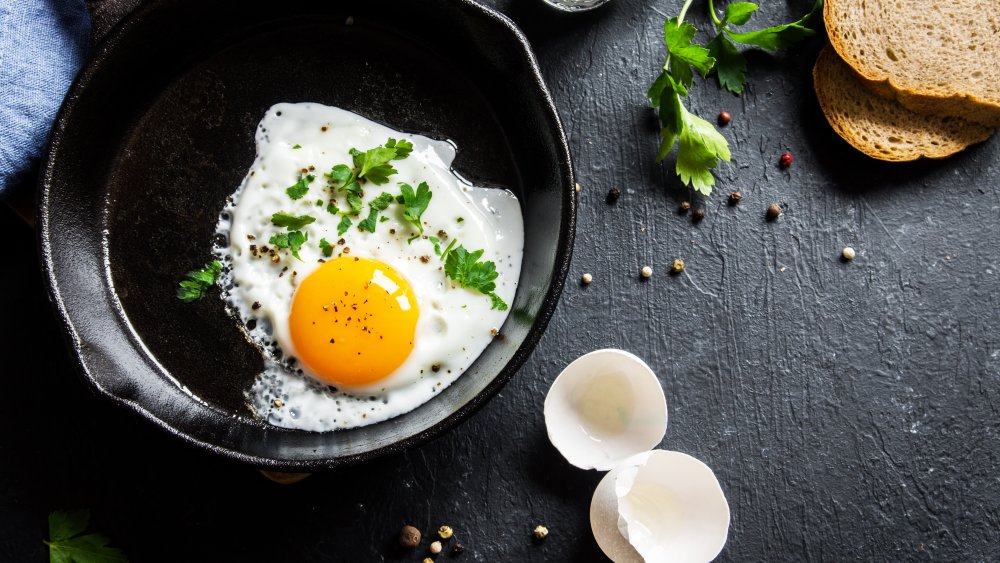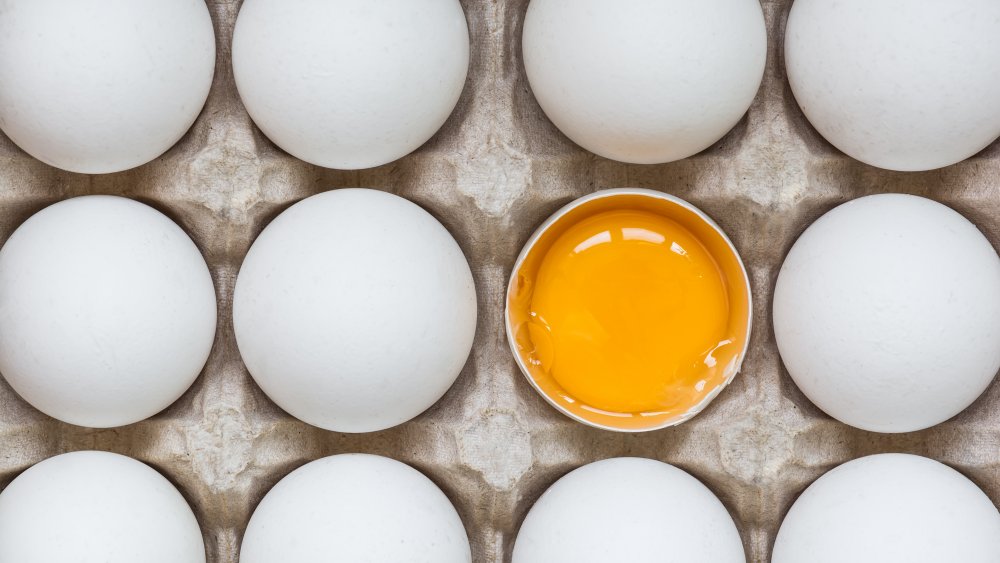The Reason Colorful Egg Yolks Are Uncommon In The US
Different-colored eggshells are easy to spot, especially since you'll usually only find white or brown, but have you been paying attention to the color of the yolks inside? While you might be used to seeing an orange-ish yellow yolk, depending on where you buy your eggs, you'll sometimes notice slight changes in color. Occasionally, the yolks might be a little lighter and more yellow, and sometimes you might crack one open and see a dark orange yolk staring back.
If you end up with an egg that's a different color than what you're used to, don't sweat it. According to Today, what the hen laying the egg was fed can affect the color of the yolk. Eat This, Not That reports that hens raised in pastures and typically eating grass, grasshoppers, and worms will lay eggs that have dark orange yolks. Paler yellow yolks come from hens that likely weren't foraging for themselves, and instead ate a vegetarian diet of corn and wheat.
However, it's also possible for farmers to influence the color of the yolk. According to Reader's Digest, artificial coloring isn't allowed in chicken feed, but farmers can add other things to affect the color. For example, marigold petals added to feed will help give the yolks a boost of orange pigment, while capsicum (found in red bell peppers) or a sprinkle of paprika can make the yolks turn reddish in color. So, why are most of the egg yolks from the supermarket a similar color?
Egg yolk colors can vary around the world
According to Huff Post, 97 percent of the eggs sold in the United States come from factory farms, so usually, their color comes from additives in the chicken feed. However, if you buy eggs at your local farmers market, and the chickens weren't eating feed, you might notice a color change from what you're used to getting at the grocery store. Egg yolks around the world can vary drastically in color, too, and it sometimes depends on the preferences of customers in that region. According to Modern Farmer, egg yolk preferences are different all across Europe. In general, people in northern Europe prefer lighter, paler yellow yolks, while southern Europeans look for a golden color, and the Mediterranean region almost exclusively eats eggs with orange-red yolks.
Preferences aside, yolk colors can also vary across the world based on the feed available for chickens. As NPR reports, sorghum, a pale-colored grain, is used as chicken feed in some parts of Africa, including Tanzania, which results in eggs with extremely pale yolks. In contrast, in some parts of South America, egg yolks can be a pink color, dark orange, or red-orange thanks to red annatto seeds in the feed. So while you might see a familiar color every time you crack an egg from a U.S. grocery store, don't be surprised if you see all different shades of yolk colors at farmers markets and across the world.

